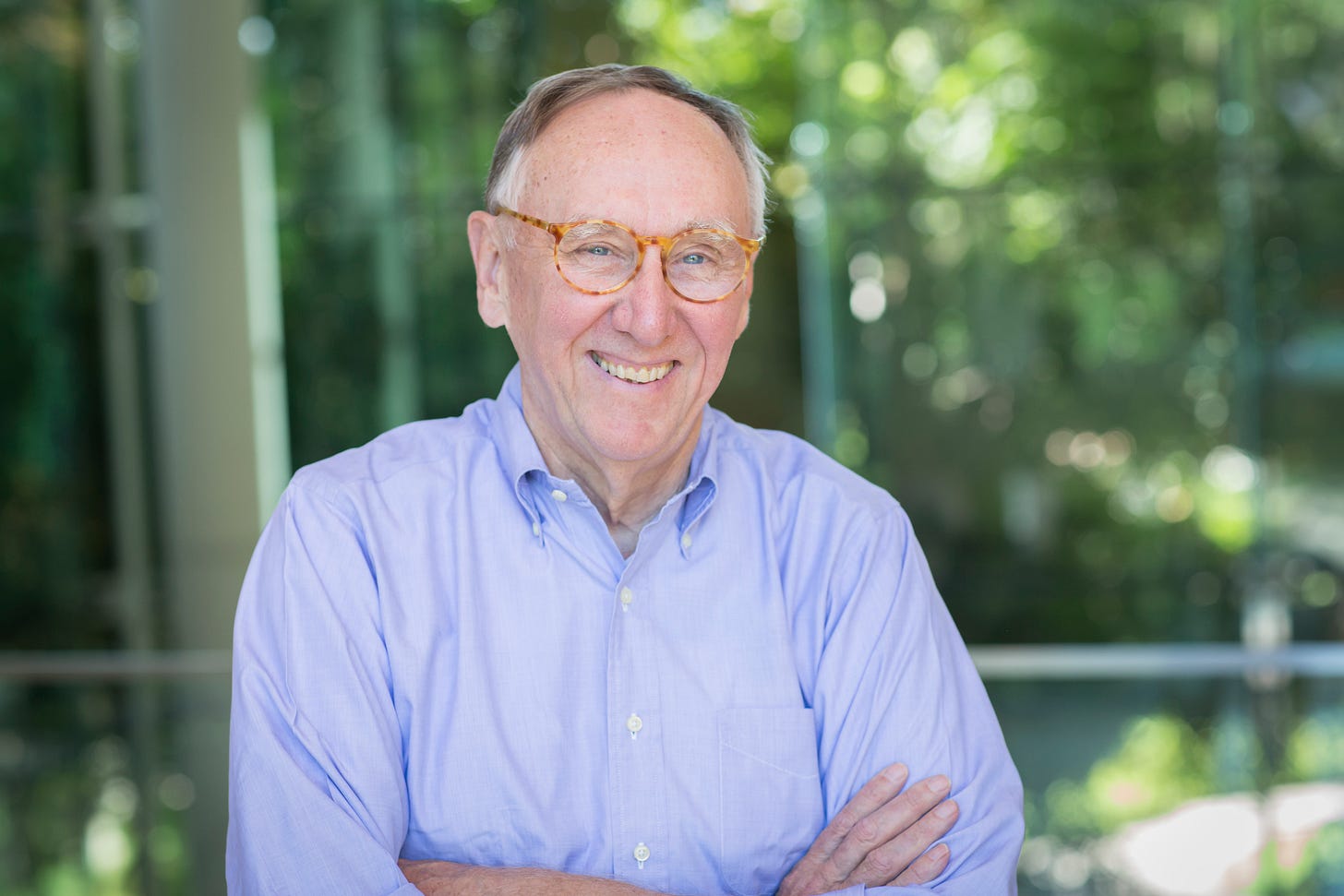Esri Founder Jack Dangermond's 'Secrets' To Building A Legendary Business
The 80-year-old software billionaire shares startup and life lessons that have kept him "all in" while running a high-impact global business for 50+ years.

The Upshot
“To be a decent businessman, just be a decent person.”
Upstarts had just spent an hour chatting with one of the tech industry’s legends, a software entrepreneur and category creator who – at 80 years young, and despite a personal net worth estimated at $10.8 billion – still puts in full shifts at the company he founded more than 50 years ago.
And Jack Dangermond, the president of Esri, had those parting words of advice, along with some for this article itself: “Keep it simple; don’t overthink it.”
When Dangermond shares advice like that, it carries rare weight. He may not be a household name, but few have built a business with the scale, durability and impact as he.
The tech entrepreneur had just completed a Master’s degree in landscape architecture at Harvard’s Graduate School of Design in 1969 when he and his wife, Laura, decided to launch a business called Environmental Systems Research Institute, or Esri.
The idea was to combine their interests in environmental studies, computer mapping and systems analysis into a first-of-its-kind company helping to use geography to figure out where to locate a park, or a power plant, or a city. That vision developed into the pioneer company behind GIS, digital mapping software that underpins the projects of countless corporations and academic researchers.
To give you a sense of the scale: Esri’s online environment today includes some 75 million digital maps. Millions of users across more than 700,000 organizations including FedEx, Nike, UPS, Starbucks and the cities of Los Angeles and New York build on top of it, alongside 170 startups, countless schools and 7,000 non-government organizations that receive access for free.
Esri’s scale – and Dangermond’s influence – are underappreciated in Silicon Valley, likely in large part because Esri is still privately held and never raised venture capital dollars. But Esri employs 5,500 people, many of them out of its headquarters in Redlands, just outside San Bernardino in southern California.
Revenue stands at approximately $2 billion, with partners generating 10x that themselves, for a financial impact of $35 billion-plus, Dangermond says.
And Esri has reached such scale by doing things differently from the venture-backed playbook. While the company spends about one-third of its revenue on innovation, it’s never pursued hypergrowth; at its fastest, the company grew about 50% one year in the 1990s, Dangermond says. Many employees stay for decades; the company has never conducted large-scale layoffs.
Make no mistake: Esri is not a lifestyle business. Employees participate in profit sharing, but they’re also compensated by the hours they put in. Work more – and Dangermond stresses that Esri had to out-hustle the competition, particularly before it reached market dominance – and you make more money.
“You don’t get there without a heck of a lot of hard work,” Dangermond tells Upstarts.
Esri is a life’s work business. That’s another of Dangermond’s secrets to success: from cross-country running to college math courses he dreaded, he’s never done anything halfway. “It’s going all in on something, even if you’re bad,” he says. “What I chose as a profession, I went all in on, and I loved it. It was what I really liked to do, and what I really thought was important.”
Which is why today, Dangermond’s still at the office, sympathetically fielding calls from fellow CEOs and leaders who complain about answering to the public markets and shareholders. He’s fired up about AI – playing with LLMs personally and plugged into how Esri is integrating AI into its business – and still all in.
More on how Dangermond built Esri – including company-building lessons and a couple of key moments in the company he’s never talked publicly about until now – below.
On a personal note, it’s an honor – and a true pleasure – to be able to share Dangermond’s life and lessons with today’s startup founders through our work at Upstarts. We thank you for being here.
Keep reading with a 7-day free trial
Subscribe to Upstarts Media to keep reading this post and get 7 days of free access to the full post archives.


